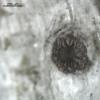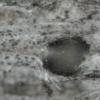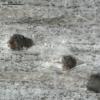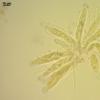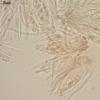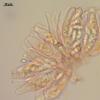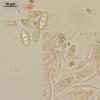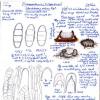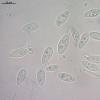
02-01-2026 17:43
MARICEL PATINOHi there, although I couldn't see the fruitbody, I

04-01-2026 17:45
 Stephen Martin Mifsud
Stephen Martin Mifsud
I was happy to find these orange asmocyetes which

03-01-2026 13:08
Niek SchrierHi all,We found groups of perithecia on a Lecanora

29-12-2025 17:44
Isabelle CharissouBonjour,J'aimerais savoir si d'autres personnes au

01-01-2026 18:35
Original loamy soil aside a artificial lake.The co

31-12-2025 19:27
Collected from loamy soil, at waterside (completel
It grew on decorticated bleached wood of standing-dead pines (Pinus sylvestris) (N61,054422° E69,456725°).
Apothecia submerged in wood, spherical to deep cupulate, up to 300 mk wide, hymenium grayish, yellowish, smooth, outer surface rough, dark brown, radially splitted.
Excipulum from thick mass of cylindrical hyphae (not well distinguishable); asci bottle-shaped, bulged in the middle, extending in length when mature, clampless, near 60 x 15 mk, wall of ascus with amyloid reaction in upper part, pore inamyloid; spores ellipsoid, 3-segmented when mature, 12,7 (11,4-14) x 5,7 (5,3-6,1) mk; paraphyses filiform (1 mk thick), rare segmented at base.
I used the key in: Sherwood-Pike, M.A., 1987. The ostropalean fungi.

So I assume yours is the right O. minus.
Zotto

Sherwood's specimen has also quite many septa but what she draws is actually the dead plasma, not the cell wall, so the septa look thick.
Zotto




